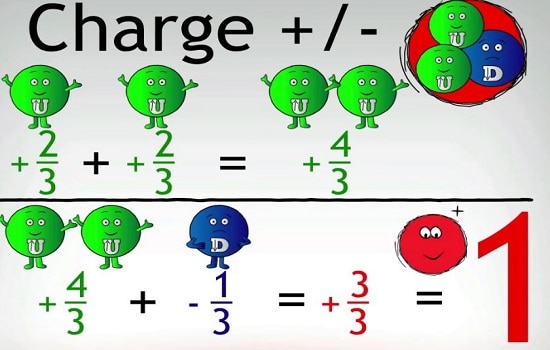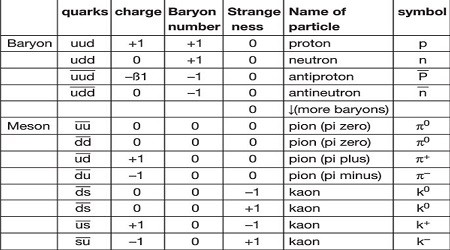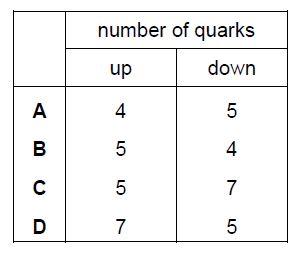Nuclear Physics: Short Note on Quarks and Leptons

Quarks are the fundamental particles. They are what make up nucleons, i.e. protons and neutrons, as well as other particles. Electron is a fundamental particle, one of a group of fundamental particle called leptons.
The term fundamental means the particles does not have a sub structure; it can’t be split.
They are the fundamental building blocks which build up matter, i.e., they are seen as the “elementary particles”.
There are six quarks, but they are usually talked in terms of three pairs: up/down, charm/strange, and top/bottom.
Up – has a charge of +2/3
Down – has a charge of -1/3
The up and down quarks are different in mass, charge, and spin. These quarks are the most common and least massive.
Four main configurations
(i) Proton
It is made up of two ‘up’ quarks and one ‘down’ quark (UUD)
Proton has a charge of +1 = +2/3 (U) +2/3(U) -1/3(D)
(ii) Neutron
It is made up of 2 ‘down’ quarks and an ‘up’ quark (DDU)
Neutron has a charge of 0 = -1/3 (D) -1/3 (D) + 2/3 (U)
(iii) The Pion (π+)
It is made up of an ‘up’ and an ’anti-down’ quark.
(iv) The Kaon (K+)
It is made up of an ‘up’ and an ‘anti-strange’ quark.
Hadrons
Hadrons are unstable with the exception being the proton-the only stable Hadron.
Hadrons are composed of smaller fundamental particles called Quarks.
Meson have 2 Quarks and Baryons 3. Hence mesons don’t decay to protons or neutrons.
Some carry charge i.e. (p, Kˉ, K+)
Some have no charge i.e. (n, Ko)
Simple quark model of hadrons
Below is the diagram of simple model of hadrons

Difference between Hadrons and Leptons
- Hadrons feel the strong force while lepton do not
- Hadrons have masses much larger than that of leptons
Solution to CIE A level physics questions on fundamental particles
Question 1
Which combination of up (u) and down (d) quarks forms a neutron? (Oct/Nov 2017 P12)
A u u u B u u d C u d d D d d d
Neutron has one u and two d = udd
C is the correct option
Question 2
What is the quark composition of a hydrogen-3 nucleus, 3H1 ? (Oct/Nov 2017 p11)

Solution
Hydrogen – 3 nucleus has one proton and two neutron
one proton =two u and one d= 2u and d
two neutrons = 2(one u and two d) = 2U and 4d
In all, Hydrogen – 3 nucleus has 4 u and 5 d
A is the answer
